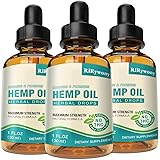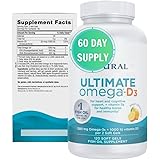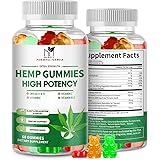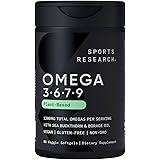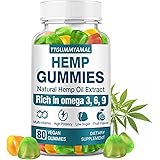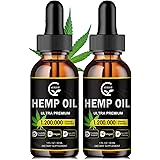The intricate world of cannabis and its derivatives often leads to confusion, with terms like cannabis, hemp, CBD, and THC being used interchangeably. As was elucidated in the accompanying video, a precise differentiation between these compounds is paramount for comprehending their distinct properties, legal statuses, and, most significantly, their varied medicinal benefits. This comprehensive guide is intended to expand upon the foundational distinctions and therapeutic applications discussed, offering a deeper understanding of these increasingly recognized plant-based remedies.
Understanding the Cannabis Plant: Hemp vs. Marijuana
Fundamentally, the term ‘cannabis’ refers to a genus of flowering plants in the Cannabaceae family, which encompasses both marijuana and hemp. Although both originate from the same plant species, their chemical compositions and legal definitions diverge significantly. As was highlighted, this distinction is crucial.
- Cannabis (Marijuana): This variant of the cannabis plant is characterized by higher concentrations of tetrahydrocannabinol (THC), the primary psychoactive compound responsible for the “high” sensation. Consequently, its legal status remains more restrictive, often requiring medical prescriptions or being subject to recreational legalization in specific jurisdictions.
- Hemp: In contrast, hemp is a specific cultivar of the cannabis plant that contains 0.3% THC or less on a dry weight basis. This minimal THC content ensures that hemp-derived products, including cannabidiol (CBD), do not induce psychoactive effects. This critical threshold was established by the 2018 Farm Bill, an act that notably legalized hemp federally in the United States, thereby separating it from the Schedule I controlled substance classification previously shared with marijuana. The signing of this bill by President Trump, as mentioned in the video, represented a monumental shift in agricultural and medicinal policy.
Furthermore, within both cannabis and hemp plants, there exist hundreds of active compounds known as cannabinoids. The two most extensively studied and therapeutically significant cannabinoids are THC and CBD, each possessing unique pharmacological profiles.
CBD: The Non-Psychoactive Powerhouse of Wellness
Cannabidiol, or CBD, is a non-intoxicating cannabinoid celebrated for its wide array of potential medicinal benefits without the psychoactive effects associated with THC. This compound is primarily derived from hemp, rendering it legal across all 50 states when sourced from a hemp plant meeting the <0.3% THC threshold.
The mechanisms by which CBD exerts its effects are complex, primarily interacting with the body’s endocannabinoid system (ECS). The ECS is a vast regulatory system that plays a pivotal role in maintaining homeostasis—the internal balance crucial for health—across various physiological functions, including mood, pain sensation, appetite, and immune response. CBD does not directly bind to the main cannabinoid receptors (CB1 and CB2) in the same way THC does; rather, it modulates the activity of these receptors and influences other non-cannabinoid receptors and ion channels. As Dr. Weiner underscored, our bodies naturally produce endocannabinoids, and CBD is believed to support and enhance this intrinsic system, particularly as natural production may decline with age, contributing to chronic diseases.
Key Medicinal Benefits of CBD:
- Anti-inflammatory: CBD is recognized for its potent anti-inflammatory properties. It has been shown to reduce inflammation by interacting with various immune cells and pathways, offering a natural alternative to traditional non-steroidal anti-inflammatory drugs (NSAIDs) such as ibuprofen or meloxicam for conditions like joint pain and systemic inflammation.
- Anxiolytic (Anxiety Relief): A significant number of individuals utilize CBD for managing anxiety. Studies and anecdotal evidence suggest that CBD can promote a sense of calm and reduce symptoms of anxiety disorders. For many, it has provided a viable option for reducing reliance on conventional anxiolytics like Xanax, Valium, or Klonopin.
- Pain Management: CBD’s analgesic effects are attributed to its anti-inflammatory properties and its influence on pain perception pathways within the central nervous system. It is often employed for chronic pain conditions, including neuropathic pain and general musculoskeletal discomfort.
- Antioxidant Properties: As an antioxidant, CBD assists in combating oxidative stress, which is a key contributor to many chronic diseases and aging. This action supports overall cellular health and boosts the immune system.
- General Wellness Supplement: Given its broad modulatory effects on the ECS, CBD is increasingly viewed as a daily wellness supplement, akin to a multivitamin, to support overall physiological balance and resilience.
THC: Potent Therapeutic Agent with Psychoactive Effects
Tetrahydrocannabinol, or THC, is another prominent cannabinoid, known primarily for its psychoactive properties. This effect arises from its strong binding affinity to the CB1 receptors, which are abundantly found in the brain and central nervous system. Despite its intoxicating nature, THC possesses a robust profile of medicinal benefits, particularly for more severe or refractory conditions.
Key Medicinal Benefits of THC:
- Nausea and Appetite Stimulation: THC is highly effective in managing severe nausea and vomiting, particularly for patients undergoing chemotherapy. It also serves as a powerful appetite stimulant, which is crucial for individuals suffering from wasting syndromes or severe lack of appetite.
- Pain Relief: Similar to CBD, THC exhibits significant analgesic properties. It is often prescribed for various types of chronic pain, including neuropathic pain (e.g., from diabetic neuropathy or multiple sclerosis), sciatic pain, and other musculoskeletal issues, where it can provide relief that other medications cannot.
- Muscle Spasticity: THC has potent anti-spasmodic effects, making it invaluable for patients experiencing muscle spasms and spasticity associated with conditions like multiple sclerosis (MS) or spinal cord injuries.
- Insomnia: For individuals struggling with severe insomnia that is not sufficiently managed by CBD or other interventions, THC can be very effective in promoting sleep due to its sedative properties.
- Anti-cancer Properties: A remarkable, albeit less commonly known, property of THC is its potential anti-cancer activity. As was pointed out, the United States even holds a patent on cannabinoids for their ability to protect the brain from damage and for their potential role in programmed cell death (apoptosis) in cancer cells. Research indicates that THC may help to shrink tumors and decrease metastasis, acting as an anti-proliferative agent against various cancer types. This area of research is continuously expanding, holding significant promise for future oncological treatments.
Ensuring Product Quality: The Importance of Regulation and Testing
With the widespread availability of hemp-derived CBD products, concerns regarding quality, purity, and accurate labeling have understandably arisen. The video rightly emphasized the current challenges within this largely unregulated market, which can unfortunately lead to products lacking the stated cannabinoid profiles or containing harmful contaminants.
The legalization of hemp through the Farm Bill has paved the way for more stringent federal oversight, yet the market remains somewhat akin to the supplement industry, where regulatory enforcement has historically been less strict than for pharmaceuticals. This necessitates an informed approach from consumers.
Critical Factors for Product Quality:
-
Third-Party Lab Testing: Reputable manufacturers will provide readily accessible Certificates of Analysis (CoAs) from independent, third-party laboratories. These reports verify the cannabinoid content (ensuring the product contains the stated amounts of CBD and THC, and remains below the 0.3% THC legal limit for hemp) and confirm the absence of harmful contaminants such as:
- Pesticides: Residues from agricultural practices.
- Heavy Metals: Lead, mercury, cadmium, which can be absorbed from the soil.
- Mold and Mildew: Fungi that can contaminate plants during growth or improper storage.
- Residual Solvents: Leftovers from extraction processes.
-
Extraction Methods: The method by which CBD and other cannabinoids are extracted from the hemp plant significantly impacts the final product’s quality and purity. Common methods include:
- CO2 Extraction: This method utilizes pressurized carbon dioxide to pull cannabinoids from the plant material. It is considered a clean and efficient process, often yielding highly pure extracts free from harsh chemical residues.
- Ethanol Extraction: Ethanol is also used as a solvent to extract cannabinoids. While effective, careful post-processing is required to ensure all alcohol is removed from the final product.
Consumers are advised to seek out products that specify their extraction methods and prioritize those utilizing cleaner processes.
- Transparency and Traceability: Brands that offer full transparency, detailing their farming practices, sourcing of hemp, and manufacturing processes, are generally more trustworthy.
The continuous evolution of research into the medicinal benefits of cannabis and hemp compounds, including CBD and THC, is undeniably promising. As the market matures and regulatory frameworks become more robust, access to safe, effective, and high-quality cannabis-derived products will become increasingly streamlined. The profound impact on chronic pain management, anxiety relief, anti-inflammatory processes, and even the fight against cancer underscores the significant potential these natural compounds hold for improving human health and wellness.


